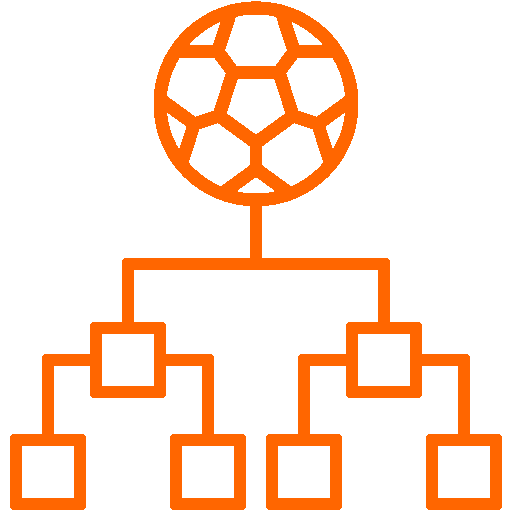Types of races
Allowance Races - are non-claiming races intended for younger, less experienced horses or horses that are not for sale. Such races have specific entry conditions. These races may be limited to entries that have not yet won one, two, or three races and might have a hard time to race against more experienced horses. Examples of allowances races are: Non-Winners of 2 races, Non-Winners of 3 races, Non-Winners of 4 races. Other entry conditions may also apply based on previous race outcomes or age-sex differences.
All-Weather Races - are flat races that are run on artificial surface specifically designed to sustain racing under any weather conditions. All-Weather tracks can be used all year around but are mainly conducted during winter.
Amateur Races - are flat races run by amateur riders, only. In most of these races, there is no wagering. On the race card, amateur jockeys can be easily identified by the title Mr., Mrs, or Miss prefixed to their last name.
Apprentice Races - are flat races limited to apprentice jockeys. Apprentice jockeys are those who want to become professional riders. They may carry a weight allowance depending on the race conditions and the jockey's individual experience. The equivalent to an apprentice jockey in jump racing is a 'conditional jockey'.
Bumper Races - formally known as National Hunt flat race, are flat races run by mostly young horses in order to become accustomed to the challenge of Jump races. These type of races are usually at the end of a racing event and often feature amateur jockeys.
Claiming Races - Claiming races are dominant on the French and American horse racing market. These races serve primarily to buy or sell horses. In a claiming race, each horse has a predetermined price. Horses are bought or claimed according to that price, prior to the start of the race. After the race, the person claiming (buying) the horse is said to be the new owner and has to pay the old owner, regardless of what happens to the horse during the race such as injuries. In the USA, claiming races make up about 70% of all races offered.
Classic Races - also known as British Classics are a series of annual flat races limited to three-year old Thoroughbreds. These races are the:
- 1,000 Guineas Stakes
- 2,000 Guineas Stakes
- Epsom Oaks
- Epsom Derby
- St. Leger Stakes
The 1,000 Guineas and Oaks are restricted to fillies, the other three are open to both.
In the USA, the following races are classified as 'Classics':
The Triple Crown races - The Kentucky Derby, the Belmont Stakes, Preakness as well as the Travers Stakes and Breeders' Cup Classic.
Condition Races - are said to be a level below listed races and, therefore, considered as highlights. Horses participating in condition races have to abide to certain conditions, which means that they have to carry additional weight, selected by the race secretary depending on their age, sex, or/and ability. For example, a young mare, which has never won any previous race would have to carry less weight than her older male competitor which has won previous races. This is referred to as ‘Weight for Age’. The most famous condition race is the Epsom Derby.
Group Races - are the top range of horse races. To enter a group race, the owners have to pay a stake which flows into the betting pool for the winning horse. Group 1 races are categorized as the most prestigious races as only the best runners are entitled to race against each other. Group 1 races include Classics and other races of international importance. Group 2 races are less important international races, and Group 3 races are primarily domestic races. Below in status are 'Listed Races.'
Handicap races are races, in which horses of different abilities compete against one another. A horse, running a handicap race is allotted a weight on the basis of an official rating made up of the horse’s past performance. Therefore, participants of handicap races must have won or run three races at least. The ratings converted into weights, also known as handicap mark, are updated weekly by the official handicapper to give each runner an equal chance of winning. The weight is carried by means of lead bars, ranging from 40 to 110 kilogrammes, and is added to the saddle. If the weight is lost during the race, the horse will be disqualified.
Example: If you bet on the horse with the highest official rating (handicap mark), you bet on the horse, which carries the highest weight. This horse is said to be the best horse in the race.
In the US the amount of weight carried by each horse is assigned depending on the conditions set out by the racing secretary of the course.
Harness Racing or 'trotting' is a form of racing in which the horse races at a specific gait known as trot or pace. Each horse will be pulling a 'sulky' which is a two-wheeled, bodiless cart on which the jockey sits.
Hunter Chases are a form of steeplechase races which are restricted to horses that have been hunted on a regular basis and qualify to compete in point - to - point races.
Hurdle Races are a type of jump races which feature collapsible jumps over a distance of two to three miles. These races are restricted to three-year-old and older horses. The Stan James Intermediate Hurdle at Newbury and the Cheltenham Festival's Champion Hurdle belong to the most 'important' hurdle races in Great Britain.
Left - Handed Races are races run anticlockwise from the starting point.
Listed Races are races categorized just below Group races.
Maiden Races are races restricted to horses that have not yet won a previous flat race or horses that are first- time starters as well as horses that have finished as 2nd or 3rd place previously. The first winning of such a race is then known as 'breaking his/her maiden'. Generally, this happens in a maiden race, but in some cases there are horses that win their first race in an allowance or stake race.
National Hunt Races are a series of jump races in which the horse jumps over a number of obstacles such as fences or ditches. The season takes place in winter and spring.
Novice Races are races usually associated with National Hunt jump-races which are restricted to horses that have not won a particular type of race. In flat racing novices can also be defined as horses that have not won more than two races.
Nursery Races are races which are exclusively restricted to two-year-old horses.
Open races/ stakes are races in which any horse may participate if all necessary entry requirements are fulfilled.
Point - to - Point Races are steeplechase races open to amateur jockeys and commonly feature future jump racing horses. The season start in January and ends in June each year.
Sprint Races also known as 'sprints' are Thoroughbred flat races of less than a mile. These races are typically run on a straight course. Longer tracks with chutes may have one turn.
Stakes Races are races for which an entrance fee is charge in order to participate and increase the size of the prize pool. These races commonly attract experienced and high quality horses.
Steeplechase Races are a type of jumps races run between two and four miles by four-year-old horses and older. It features fixed jumps of at least 4 1/2 feet. The most important Steeplechases in Great Britain are the Cheltenham Gold Cup and the Grand National.
Turf Races are flat races on a grass surface. British flat racing on turf begins in early spring and ends in autumn. The most notable turf race courses are Ascot, Newmarket, and Epsom Downs.















